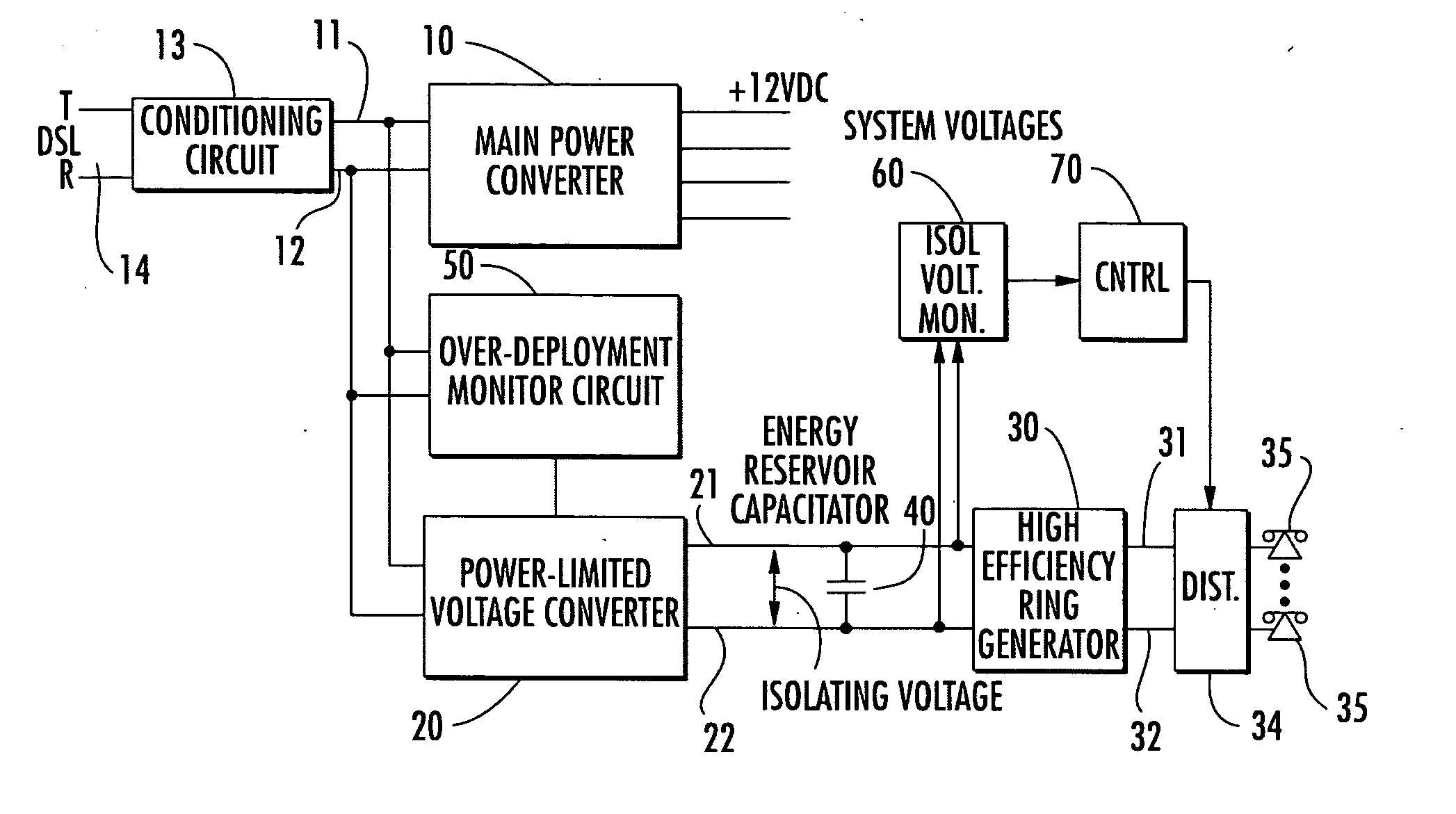Peak power management and active decoupling arrangement for span-powered remote terminal access platforms
a remote access platform and power management circuit technology, applied in the direction of telephonic communication, electric variable regulation, energy consumption reduction, etc., can solve the problems of arbitrary increases in span voltage to meet powering requirements of remote equipment, limited by telecom industry standards, safety requirements, etc., to reduce the maximum power, reduce the maximum peak current, and reduce the maximum power
- Summary
- Abstract
- Description
- Claims
- Application Information
AI Technical Summary
Benefits of technology
Problems solved by technology
Method used
Image
Examples
Embodiment Construction
[0027] Before detailing the peak power management and active decoupling arrangement of the present invention, it should be observed that the invention resides primarily in a prescribed arrangement of conventional wireline telecommunication and power converter hardware circuits and components therefor. Consequently, the configuration of such circuits and components and the manner in which they may be interfaced with a telecommunication wireline pair have, for the most part, been illustrated in the drawings by readily understandable block diagrams and attendant schematics, which show only those specific details that are pertinent to the present invention, so as not to obscure the disclosure with details which will be readily apparent to those-skilled in the art having the benefit of the description herein. Thus, the diagrammatic illustrations of the Figures are primarily intended to show the major elements of the invention in convenient functional groupings, whereby the present invent...
PUM
 Login to View More
Login to View More Abstract
Description
Claims
Application Information
 Login to View More
Login to View More - R&D
- Intellectual Property
- Life Sciences
- Materials
- Tech Scout
- Unparalleled Data Quality
- Higher Quality Content
- 60% Fewer Hallucinations
Browse by: Latest US Patents, China's latest patents, Technical Efficacy Thesaurus, Application Domain, Technology Topic, Popular Technical Reports.
© 2025 PatSnap. All rights reserved.Legal|Privacy policy|Modern Slavery Act Transparency Statement|Sitemap|About US| Contact US: help@patsnap.com


